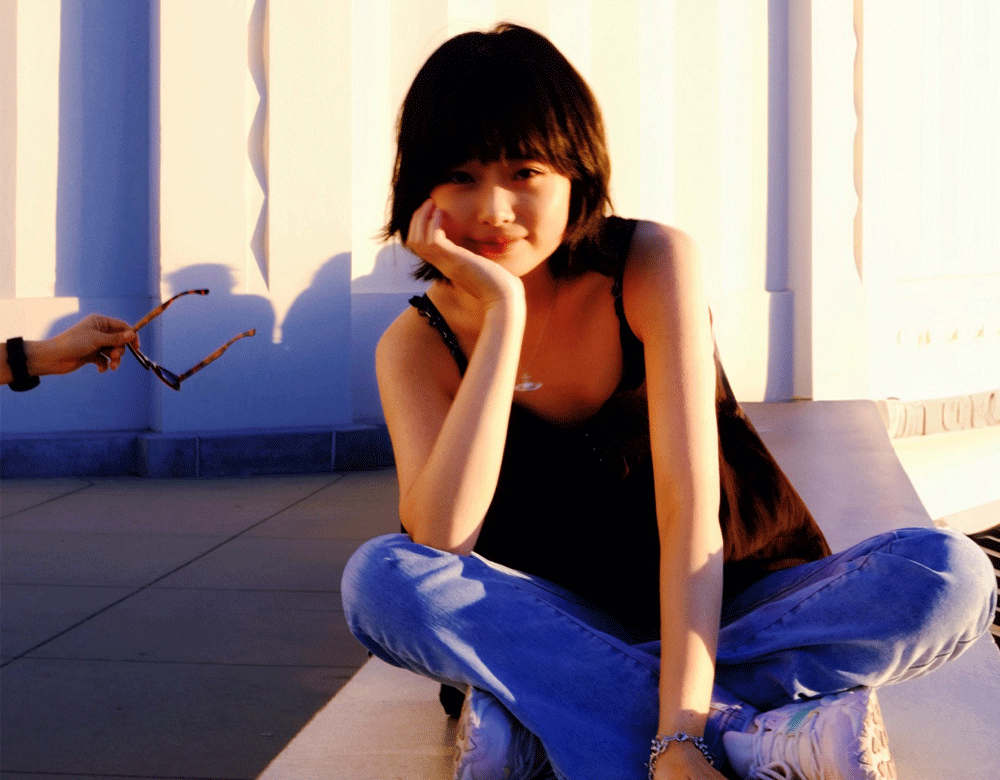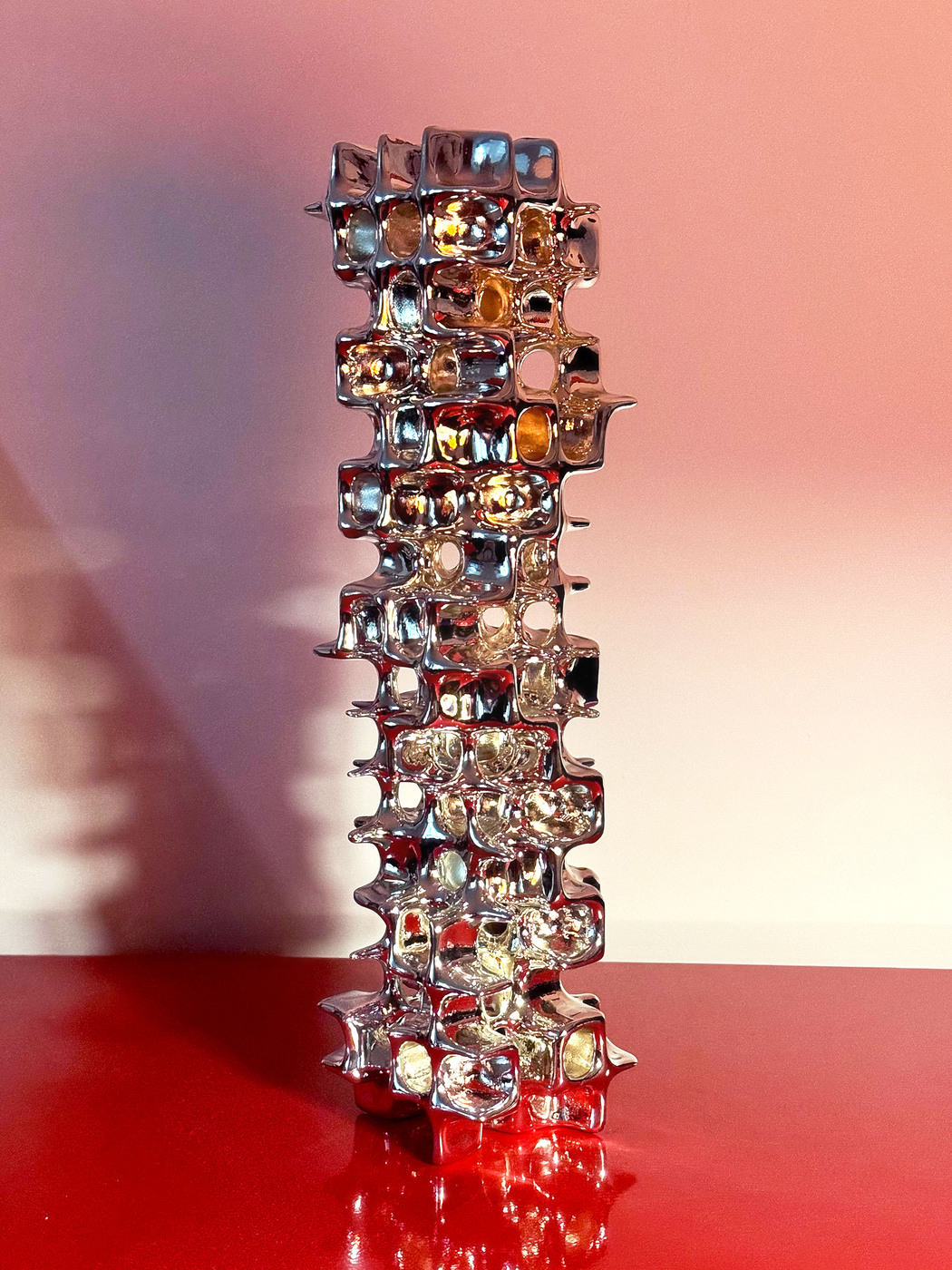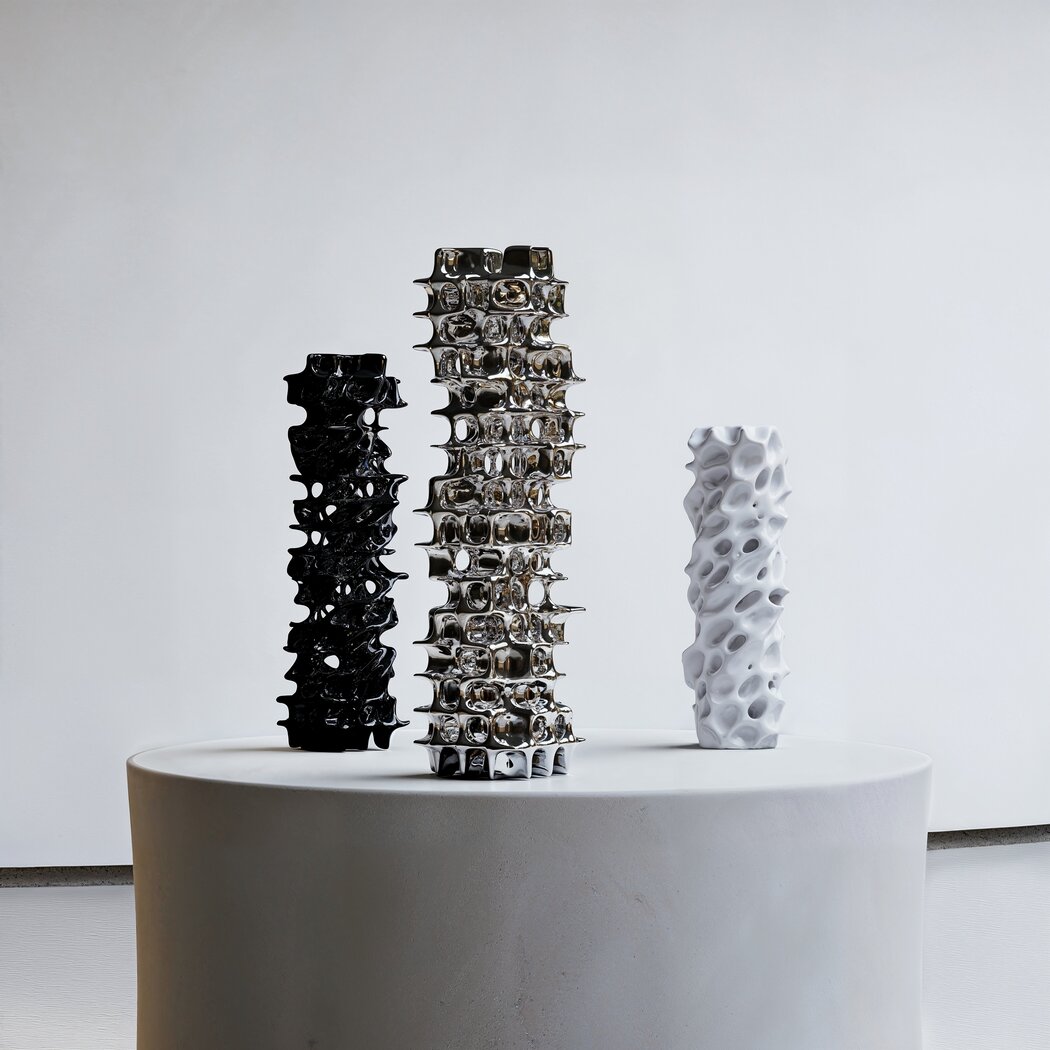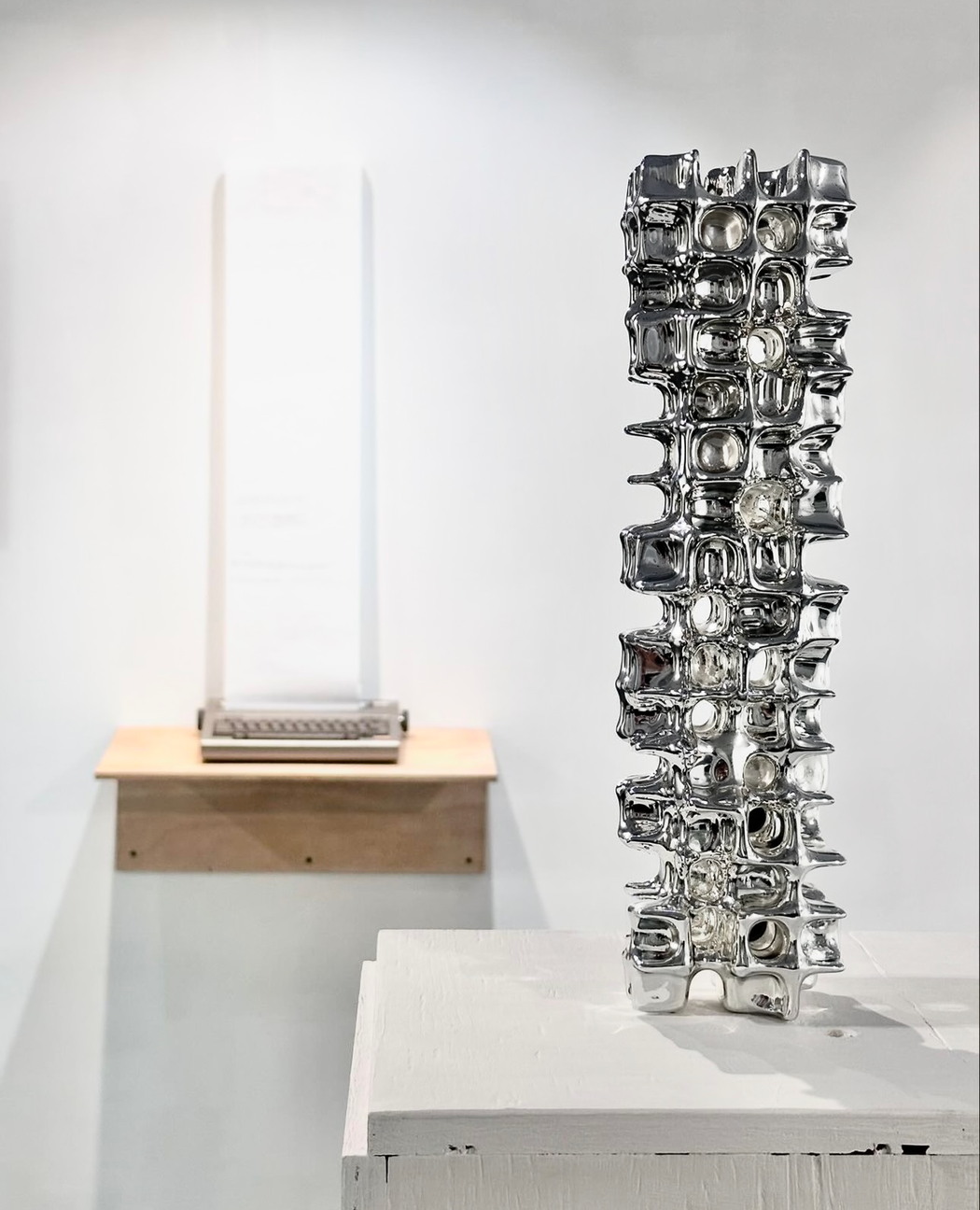Xinyue Geng
Where do you live: New York, USA
Your education: Master of Architecture, Cornell University
Describe your art in three words: Generative, Spatial, Post-natural
Your discipline: Spatial and Algorithmic Art
Website

Your work merges parametric design and organic forms. How do you balance the technical and emotional aspects of digital creation?
In my practice, emotion starts the process, and code becomes both a medium and a collaborator. I don’t see technology as neutral—it can surprise, adapt, and even respond in unexpected ways. In Digital Muse, I experimented with stepping back, allowing a biologically inspired algorithm to take the lead and evolve on its own.
Parametric design offers structure and precision, but what brings the work to life is the unpredictability built into the system—the way forms shift and grow through iteration. That uncertainty gives the work a sense of vitality. For me, emotion and technology are not in conflict—they’re intertwined. This project is, in essence, an emotional resonance born from the dialogue between human intention and machine logic.
Can you walk us through your typical creative process — from concept to final 3D-printed sculpture?
My creative process usually begins with interdisciplinary research—for example, exploring connections between biology and spatial structures. I deconstruct and abstract the cellular behavior and the logic of natural systems, translating them into coordinates, vectors, signals, and algorithms. The system doesn’t simply simulate organic forms; it encodes their inner complexity and dynamic mechanisms. The digital organism responds to disturbances, showing tendencies to move toward or away from stimuli.
By tracking the movement of cells and reconstructing them three-dimensionally over time, I generate a kind of pseudo-nature—driven by both precise control and programmed randomness. The final outcome, the 3D-printed sculpture, is a layered moment in the ongoing evolution of this digital organism through time and space. The work doesn’t seek a stable narrative—it lingers in a state of collapse, where form is still in flux.

What inspires your use of biological references like sponges and corals in “Digital Muse: Programming Nature”?
I’m drawn to sponges and corals because, as some of the earliest multicellular organisms, they embody a form of life that is both ancient and elemental. Their cellular systems give rise to modular, self-organizing spatial structures. Through the study of biological morphology, I became increasingly fascinated by how these organisms grow, adapt, and respond—through a decentralized logic of life. By abstracting and translating these silent biological systems into digital language, I am able to reimagine the very concept of life itself.
Your pieces have a strong spatial presence. Do you view them more as sculptures or as architectural micro-environments?
I think it depends on scale. At a physical scale, the works are closer to sculpture, but at a micro-spatial level, they behave more like architectural environments—they invite the body in, even if only imaginatively. Rather than defining them by category, I’m more interested in how they activate spatial perception.

How does your background as an architect influence your digital art practice?
My architectural background taught me to think in terms of spatial language—the interplay between solid and void, form and structure, body and space. Even when working with code and digital media, I approach each piece as a space to be experienced. That architectural mindset—sensitive to scale, atmosphere, and composition—continues to inform the way I speak through form.
“Programming Nature” suggests both creation and simulation. Do you see code as a generative life force?
This is a profound question—and one that runs through much of my work. Is code a non-human, life-generating force? Can we create “life” through non-biological media? As biology continues to break life down into rules and mechanisms, I’ve become increasingly aware of the parallels between code and living systems. Certain simple life forms can be fully described by logic, thresholds, and feedback loops—they grow, mutate, and decay. From this perspective, code begins to exhibit a generative vitality: non-human, yet capable of emergence.
What fascinates me about generative digital art is its ability to blur the boundary between synthetic constructs and natural realities. In Digital Muse, that very boundary becomes the question: when a form grows from code, does it count as life? Is it fiction—or an extension of nature? My work inhabits this ambiguous space—where digital matter begins to act like life itself.

Your work raises ecological questions. Is it important to you that viewers reflect on environmental issues while experiencing your art?
That depends on the viewer. My work is processual rather than didactic—it invites open interpretation. The work subtly contrasts digital coral reefs with their real-world counterparts that are vanishing. It’s less about offering answers and more about creating a provocation—one that asks what we lose, and what we fabricate, when nature collapses.
I hope to present my work in more dynamic and interactive forms in the future—making the generative process more visible, and opening space for multiple interpretations.

Leave a Reply